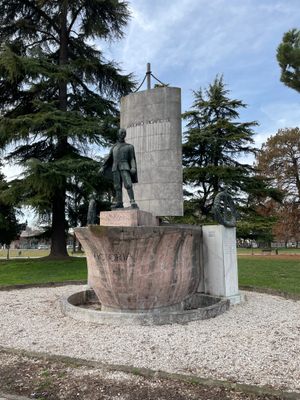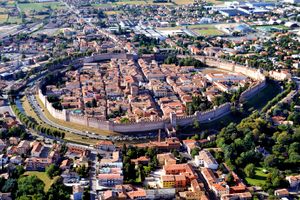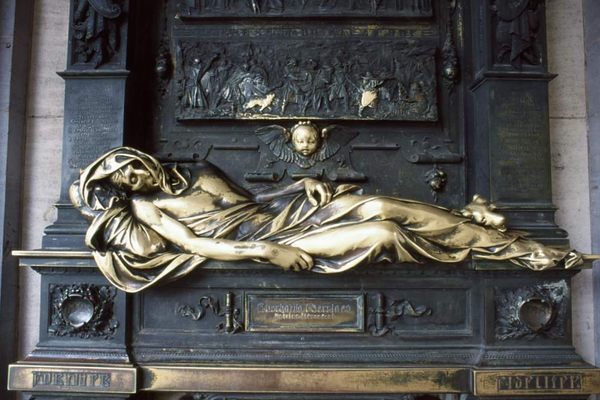About
In a park near Vicenza's train station, this statue of a man on a ship stands out because Vicenza is about 40 miles away from the closest port. The statue depicts Antonio Pigafetta, one of the 18 people who survived Ferdinand Magellan’s circumnavigation of the globe. This memorial commemorates this achievement, with Pigafetta standing on the Victoria, the only one of Magellan's five ships to complete the journey. The back of the memorial shows the expedition's route.
Pigafetta was born around 1490 to a noble family, in a striking townhouse located a short distance from the memorial near Vicenza’s main square. (It is a private property, so you cannot tour it, but there is a plaque on the front acknowledging his birthplace.)
Very little is known about Pigafetta's early life or education, other than he read a lot of books. But in 1518, he went to work for the Pope's ambassador to the Spanish court, who was from Vicenza. In Spain, Pigafetta heard of Magellan's planned expedition to find a western route to the Spice Islands, and lobbied to join it as a representative of the Vatican.
As a nobleman from Venice's Terra Firma, nothing in Pigafetta's background indicated a maritime background. He became the expedition's chronicler, covering its mutinies, lost ships, scurvy, and starvation in detail. Pigafetta became an early anthropologist, diligently studying the cultures, lifestyles, and languages of the peoples that they encountered during the journey.
Magellan died before the journey was over, in a battle in the Philippines. Some of the Indigenous people in the islands weren’t pleased about suddenly becoming part of the Spanish empire against their will. Pigefetta was also injured in the battle, but he recovered. Pigafetta is honored in the Philippines as the person who introduced Christianity to the islands.
Three years after leaving, only one of the five Magellan ships, and 18 crewmembers, made it back to Spain, along with 381 sacks of cloves, which more than covered the cost.
Pigafetta published his journals, which were a hit in Europe because of their detailed insight into the "New World." It also helped that the King of Spain kept the other officers' journals, making his report the only lasting document of the voyage. Some of the stories had an element of fantasy, like the giant natives of Patagonia. But his detail and thoroughness were a hit among the European leaders.
Pigafetta can also take credit for the first acknowledgement of the international date line. When the Victoria arrived at the Cape Verde Islands, off the west coast of Africa, a Portuguese colony at the time, they asked what day it was and according to Pigafetta’s journal, "They were answered it was Thursday, at which they were much amazed, for to us it was Wednesday, and we knew not how we had fallen into error. For every day I, being always in health, had written down each day without any intermission. But, as we were told since, there had been no mistake, for we had always made our voyage westward and had returned to the same place of departure as the sun, wherefore the long voyage had brought the gain of twenty-four hours, as is clearly seen."
After returning to Veneto, Pigefetta became a Knight of the Order of Rhodes. He likely died around 1531, around 40 years old, most likely fighting the Turks.
Related Tags
Know Before You Go
Pigafetta's birthplace (Contrà Antonio Pigafetta, 11, 36100 Vicenza VI) is private property and can only be viewed from the outside.
Flavors of Italy: Roman Carbonara, Florentine Steak & Venetian Cocktails
Savor local cuisine across Rome, Florence & Venice.
Book NowCommunity Contributors
Added By
Published
June 7, 2024






















